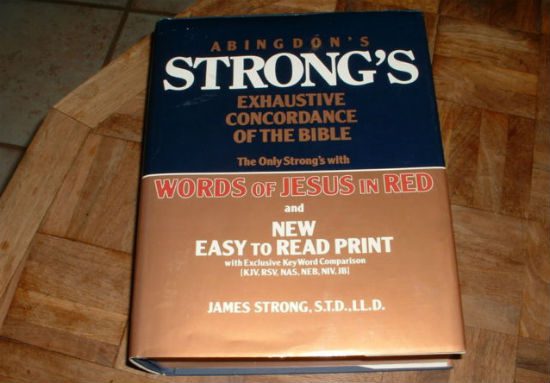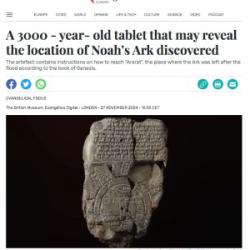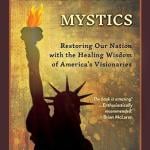Our neighbor over on the Evangelical Channel, Roger Olson, tells us “Why I Do Not Believe in the ‘Rapture.‘”
Dr. Olson is a conservative white evangelical theologian (even if arch-conservative white evangelical theologians might bristle at that description because he taught at Baylor). And he summarizes his objection to “the Rapture” in conservative white evangelical terms:
When I was taking a class in “Daniel and Revelation” in Bible college, many, many years ago, the rapture was so taken for granted, almost without argument, that I decided to delve into scripture to see if I could find it there. I couldn’t. I stopped believing in the so-called “pre-tribulation rapture of the church” then and have never found reason to return to believing in it.
Chapter and verse, buddy. Chapter. And. Verse. Text or it didn’t happen. That’s how we do it. It doesn’t get any more evangelical than that.
This is both the method and the mythos of white evangelical Christianity. It’s how we’re taught to evaluate any claim about theology or doctrine or anything else. “Delve into scripture to see if you can find it there.” Emulate the godly Bereans, the good folks the book of Acts tells us “were of more noble character than those in Thessalonica, for they received the message with great eagerness and examined the Scriptures every day to see if what Paul said was true.” (Acts 17:11, chapter and verse.)

This examining of the scriptures, alas, is usually shaped and predetermined by that same “taken for granted, almost without argument” set of preconceived notions that Olson describes. The method is not as useful or as objective in practice as we’re taught to believe it is. Concordance-ism is never your friend.
But it’s the tool we’re taught to use as white evangelicals. And, more significantly, it’s the tool we’re taught to imagine ourselves as having used, collectively, to arrive at everything we believe, thus allowing us to reassure ourselves that we — and we alone — are the noble Bereans, superior to and more biblical than those troublesome Thessalonian liberals.
None of that is good. The deceptive tool of concordance-ism and the deceptively flattering mythology that everything we believe is the product of scrupulous, objective, common-sense chapter-and-verse “delving into scripture” is massively misleading. It’s how we’ve taught ourselves not to be able to read.
But sometimes — as in Dr. Olson’s personal testimony above — it can be a constructive first step. As a good young white evangelical, he realized that what he was being taught about the “Rapture” was lacking the requisite chapter-and-verse citations we are taught to seek as the prerequisite for any belief. This made him skeptical, and he pursued that skepticism with the only tool he knew to use.
I wish Olson had described his Bible-delving on this subject in more detail. I imagine it started, as usual, with a concordance and a “word search.” That process gets tricky really fast when one sets out to “examine the scriptures every day to see if what Hal Lindsey said was true.” Much of the vocabulary of Rapture folklore and premillennial dispensationalist arcana can’t be found there in Strong’s Exhaustive Concordance. If you set out to look up every chapter-and-verse reference to the “Rapture” or “the Antichrist” or the “Great Tribulation,” you’ll wind up with a frustratingly short list.
If you “delve into scripture” to see if you can find all of that in there, you’ll quickly realize that you’ll need to expand your search beyond any such set of key terms, broadening your examination to seek out broader discussions of broader concepts, themes, and narratives. And in this specific case, if you allow yourself to pursue it the way Olson did, you’ll conclude even then that the actual “biblical” support for this whole broad framework of ideas is rather thin and patchy and unpersuasive.
But this specific result regarding this specific subject may not be the only thing you come to realize. The experience will also have taught you something about the limits and the limiting nature of the process itself. An earnest attempt to conduct such a search will also, in other words, begin to reveal not just that “the Rapture” cannot be defended “chapter-and-verse,” but that the mythology of our evangelical identity as “the truly biblical people who base all that we believe on chapter-and-verse” is similarly difficult to defend.
This is something that can’t be emphasized enough in any discussion of “deconstruction” or of “exvangelical” disillusionment. That process very often begins exactly where we’re all taught to begin. It starts with someone saying, “Really? Show me. Chapter and verse.” And then setting out, Berean-style, to examine the scriptures every day to see if what we’re being taught is true.
Olson’s Berean deconstruction of his prior unexamined belief in the “Rapture” didn’t ultimately place him outside of the white evangelical fold. Rapture-Christianity is only one stream of white evangelicalism and his rejection of that still left him many places to land that were still within the broader movement.
Carlton Pearson wasn’t so lucky. The former Pentecostal bishop — an Oral Roberts graduate — had the misfortune of doing an earnest, “delve into scripture” deep dive, Genesis-to-Revelation evangelical word-search examination of the doctrine of Hell as eternal conscious torment. He looked into scripture to see if he could find it there. And he couldn’t.
And that was not allowed. Pearson came to reject a core evangelical doctrine based on his best attempt to apply our core evangelical methodology and that got him kicked out of his Pentecostal associations and banished into the outer darkness with all the other people who don’t believe in banishments into the outer darkness.
I think that was more painful and bewildering for a guy like Pearson than it was for someone like Rob Bell. Bell was famously “farewelled” into ex-evangelicalism because he came to believe that the folklore of Hell was incompatible with the character of God. He made a compelling theological argument, but it’s not an intrinsically evangelical argument based on chapter-and-verse biblicism, and I think he understood what he was getting into. Poor Pearson, though, was caught off guard by people who seemed to be changing the rules. He was standing there with his Bible in one hand and his concordance in the other, saying, “Chapter and verse,” just as he’d been taught to do, yet he was still being punished for it.
That made him more of a threat to the status quo than Bell was. Bell could be dismissed as someone who’d been led astray by dangerous liberal approaches and methodologies, but Pearson’s application of the approved Berean approach threatened to expose the central myth of our evangelical self-concept as the scrupulously biblicistic chapter-and-verse people.*
Anyway, the point here is that “deconstruction” is bound to happen for anyone raised to believe that chapter-and-verse biblicism is the key tool for evaluating all doctrine and belief. And it’s especially inevitable for those who take to heart the mythology that all doctrine and belief has been the product of chapter-and-verse biblicism.
* This is part of why Pearson was quickly condemned and anathematized in a way that, for example, C.S. Lewis and John Stott never were despite their similar conclusions about the dubious doctrine of Hell. Their standing within white evangelicalism wasn’t threatened by their beliefs about Hell because their standing was never wholly based within evangelicalism the way that Pearson’s was. They were Anglicans whose rejection of some aspects of American white evangelical folklore did nothing to diminish their standing — or their employment — as good Anglicans. Unlike Pearson, they were both also white which, y’know, didn’t hurt.












